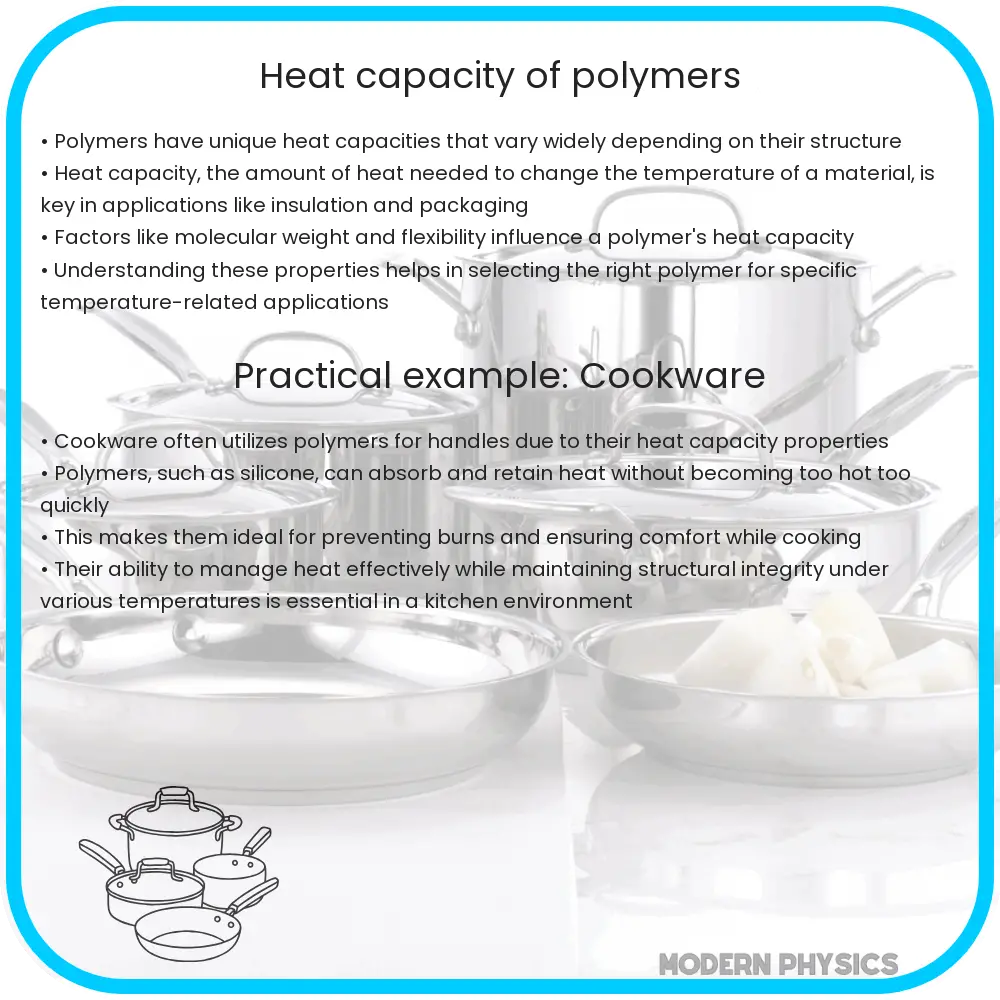Explore the significance of polymer heat capacity, its measurement techniques, and practical applications in our comprehensive guide.

Understanding the Heat Capacity of Polymers
Heat capacity, a critical property of materials, plays a pivotal role in determining how they respond to temperature changes. In the realm of polymers, which are long chains of repeating molecular units known as monomers, understanding heat capacity is essential for various applications, from manufacturing to end-use functionality.
Measurement of Heat Capacity
The heat capacity of polymers is typically measured using Differential Scanning Calorimetry (DSC). DSC is a thermoanalytical technique that measures the heat flow associated with material transitions as a function of temperature and time. In this process, a small sample of the polymer is heated or cooled, and the heat flows are compared against a reference sample under the same conditions. This method provides critical data about the specific heat capacity, a quantity that represents the amount of heat required to change the temperature of a unit mass of a substance by one degree Celsius.
Significance in Polymer Science
The significance of heat capacity in polymer science cannot be overstated. It provides insights into:
- Molecular Structure: Different polymers have unique heat capacities, reflecting their molecular structure. For instance, polymers with a more rigid structure tend to have lower heat capacities.
- Phase Transitions: Heat capacity measurements can identify phase transitions, such as the glass transition temperature (Tg) and melting point (Tm), crucial for understanding a polymer’s thermal behavior.
- Thermal Stability: A polymer’s heat capacity is an indicator of its thermal stability, important for applications where the material is exposed to varying temperatures.
Practical Applications
In practical applications, the heat capacity of polymers influences their processing and end-use performance. For example:
- Injection Molding: Knowledge of a polymer’s heat capacity is vital for optimizing the injection molding process, ensuring proper melting and cooling.
- Thermal Insulation: Polymers with high heat capacities are preferred for thermal insulation applications, as they can absorb and retain more heat.
- Electronics: In electronic applications, polymers with specific heat capacities are chosen to manage heat dissipation effectively.
Understanding the heat capacity of polymers is therefore not just a theoretical exercise but a practical necessity for engineers and scientists working with these versatile materials.
Advanced Techniques in Heat Capacity Measurement
Advancements in technology have led to more sophisticated methods for measuring the heat capacity of polymers. Techniques like Modulated Temperature DSC (MTDSC) allow for the separation of reversible and non-reversible heat flows, providing a more detailed analysis of thermal transitions. Additionally, Thermogravimetric Analysis (TGA) combined with DSC can offer insights into the thermal decomposition of polymers alongside their heat capacity measurements.
Challenges and Considerations
While measuring the heat capacity of polymers provides valuable data, it comes with challenges. Factors such as polymer crystallinity, molecular weight, and additives can significantly affect heat capacity. Therefore, precise sample preparation and consideration of these variables are crucial for accurate measurements.
Environmental Impact and Sustainability
The study of polymer heat capacity also intersects with environmental concerns. Polymers with lower heat capacities require less energy for processing, contributing to energy efficiency in manufacturing. Furthermore, understanding the thermal properties of biodegradable polymers is essential for developing sustainable materials with minimal environmental impact.
Future Trends and Research
Future research in polymer heat capacity is likely to focus on developing new materials with tailored thermal properties for specific applications. The integration of computational modeling and machine learning could also play a significant role in predicting and optimizing the heat capacity of novel polymers.
Conclusion
The heat capacity of polymers is a fundamental property that significantly influences their processing, application, and performance. Accurate measurement and understanding of this property are crucial for material scientists and engineers. As the demand for polymers with specific thermal characteristics grows, so does the importance of research in this area. Advancements in measurement techniques and a focus on sustainability will continue to shape the future of polymer science, driving innovation in materials that are not only high-performing but also environmentally responsible. Ultimately, the exploration of polymer heat capacity is a key aspect of developing advanced materials for a myriad of applications, from industrial manufacturing to sustainable solutions.
